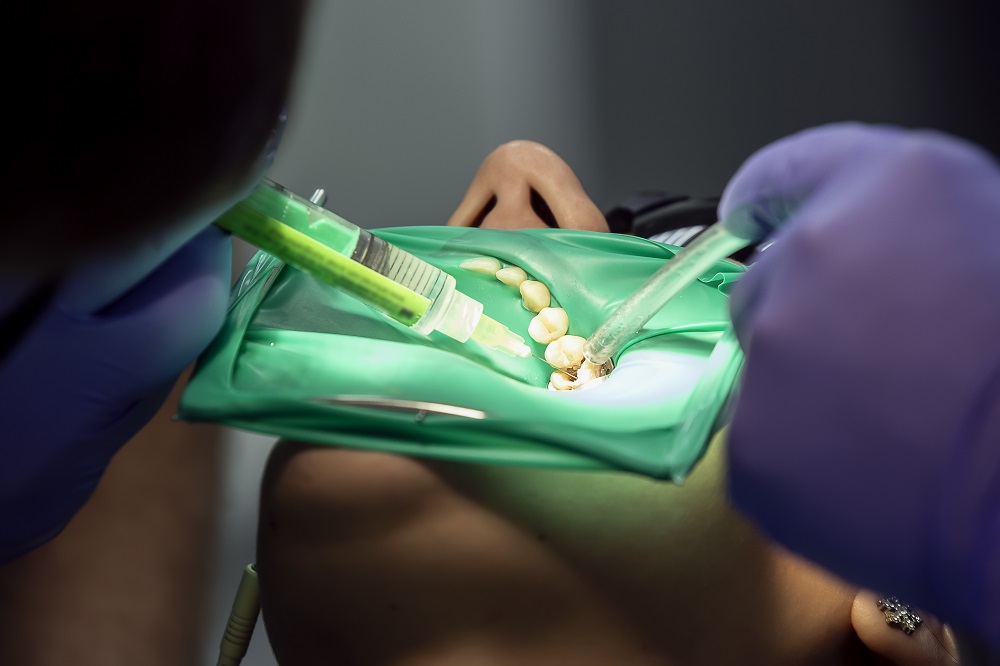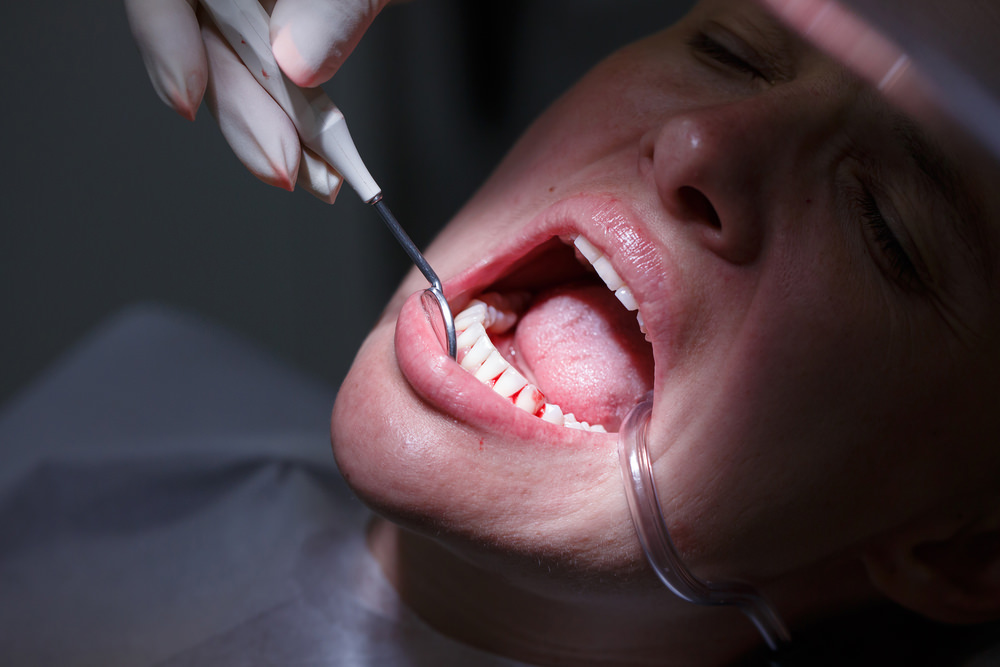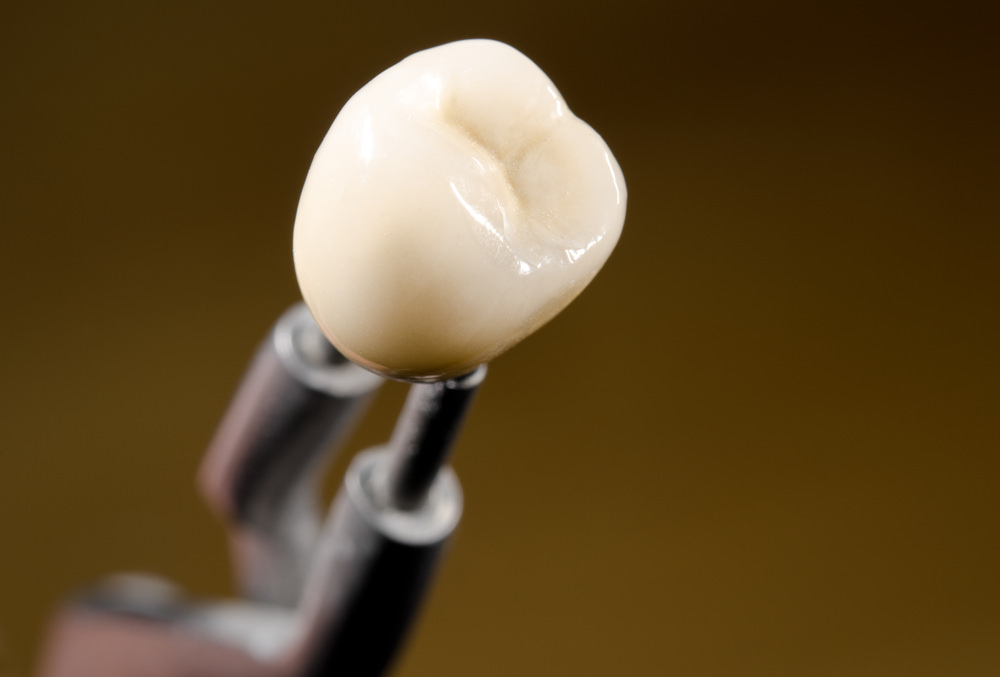Dental Restoration Costs – Don’t Get Ripped Off Again
Are you concerned about the costs of dental restoration? Worried you’ll be ripped off for the first time or yet again?
There are ways to reduce your costs if you understand the different pricing across the country and how to make sure you have all the information you need.
Dental restoration is scary, with dental clinics varying greatly in costs across Australia.
However, if you understand what’s required and the average costs, you will be informed to make the best choices for your teeth and your wallet.
Many Australians will require some form of dental restoration at some point in their lives, and most of these are not ready for the hit to their bank account.
Not everyone has the spare money to book and pay for these services immediately, but you can make sure you receive the best care at the best price.
What Are The Average Dental Restoration Costs Per Tooth?
Dental restoration ranges in price, dependent on what type of restoration you require and which dental clinic you are visiting.
Australian dental costs are not regulated, and so clinics will charge different costs between locations, type of clinic and in general.
Dental Cost Calculator
Below are some of the different restoration treatments available to you, when you visit your Dentist.
We have used our Dental Cost Calculator to find the average prices for you.
You can search either by treatment, Symptom or by Item code, making it simple to compare the average cost of any dental treatment, Australia wide.
New South Wales’ average costs for a basic filling in the front or anterior teeth will cost an average of $200.33, Victoria will cost an average of $199.81 and Queensland will cost you less at around $190.94.
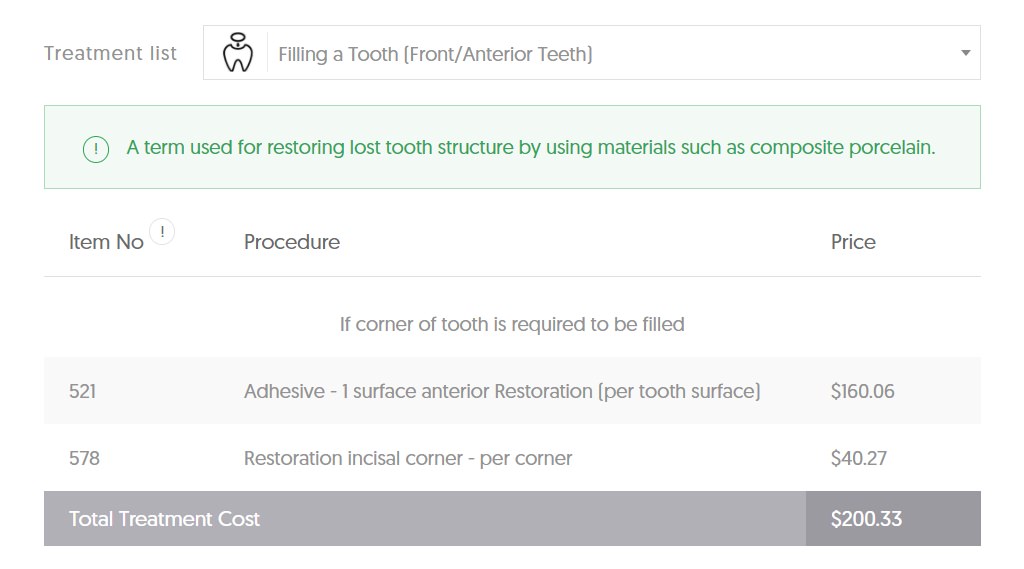
The average cost of a Composite Dental Filling
Understanding these average costs will assist you in deciding whether or not your quote is at the lower or higher end of the scale.
At the other end of the pricing, we see differences in the cost of full crowns between locations, clinics and also the type of crown.
For example, in Queensland, a full crown with a veneer will cost you $1571.08 plus the oral exam and X-ray cost of $89.97.
For a metallic full crown, it will cost you $1626.56 on average.
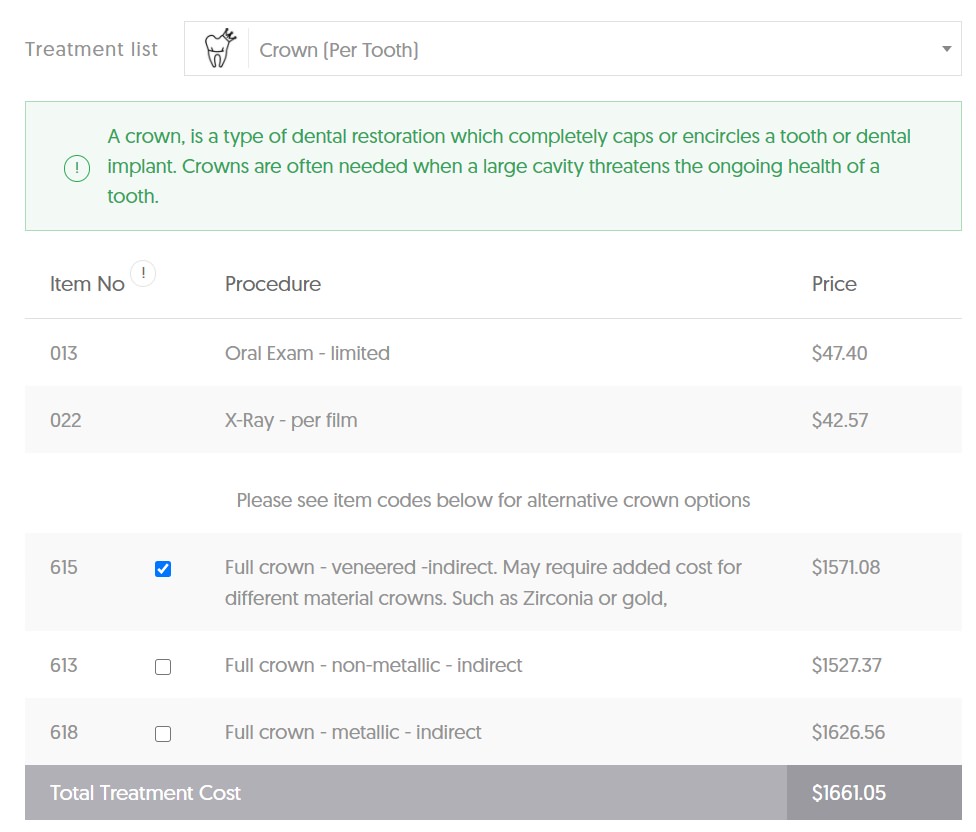
Queensland – Full crown – veneered -indirect. May require added cost for different material crowns
In New South Wales, you’re looking at $1559.29 for the full veneer plus the X-ray and oral exam cost of $94.20.
A metallic full crown will cost you $1585.49.
You can see in the comparison between Queensland and New South Wales, just how location can change the pricing structure.
It’s important to do your own research on the average costs in your area before committing to treatment and specific clinic.
In comparison to a crown, a veneer costs less on average across the states.
For example, in New South Wales, a tooth-coloured veneer with the oral exam and X-ray will cost you around $1300.91 on average.
Queensland will charge you on average more for a veneer. A total of $1326.49 for the veneer, oral exam and X-ray is the average for Queensland dental clinics.
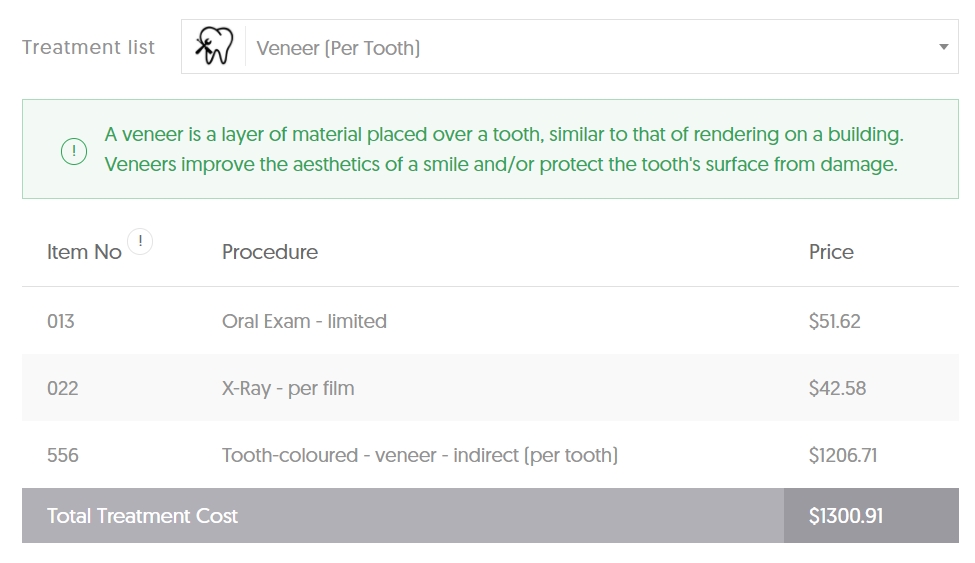
The average Full Dental Veneer cost in NSW – Source Dental Aware Cost Calculator
You can ask for a treatment plan and quote once you’ve had a consultation, in order to gauge which end of the pricing scale your clinic is on.
If you know what you require, you can also call around most clinics and obtain a price list.
Comparing costs will assist you in choosing the best clinic for your dental care and bank account.
What Is Dental Restoration?
Dental restorations are really in the word ‘restoration’.
A restoration is any way which a dentist can replace or restore either missing teeth or parts of the tooth structure.
This could be a filling, bridge, crown, implant or denture.
Which option you require will depend on the damage to the tooth, whether it be from cavities, dental trauma or other oral health issues.
Most Australians will have heard of a filling – many would have even had one or two or even more throughout their lives.
A filling is used to replace parts of the tooth depleted by decay, trauma or breakage.
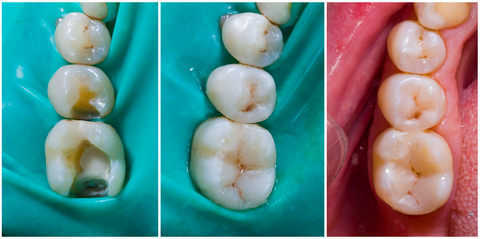
Stages of Dental Fillings on posterior teeth
They can be tooth-coloured or silver and are made from amalgam (silver) but nowadays mostly made from composite and glass-ionomer.
These are cost-effective and look better than a silver filling. They, unfortunately, don’t wear as well as silver fillings previously did, however, they can be easily repaired.
Crowns are a more serious form of dental restoration, in that they are replacing essentially, the whole tooth.
By placing a cap over the whole tooth, a crown is used when more of the tooth has been lost to breakage or decay.
It’s the strongest type of restoration, most expensive and generally long-lasting.
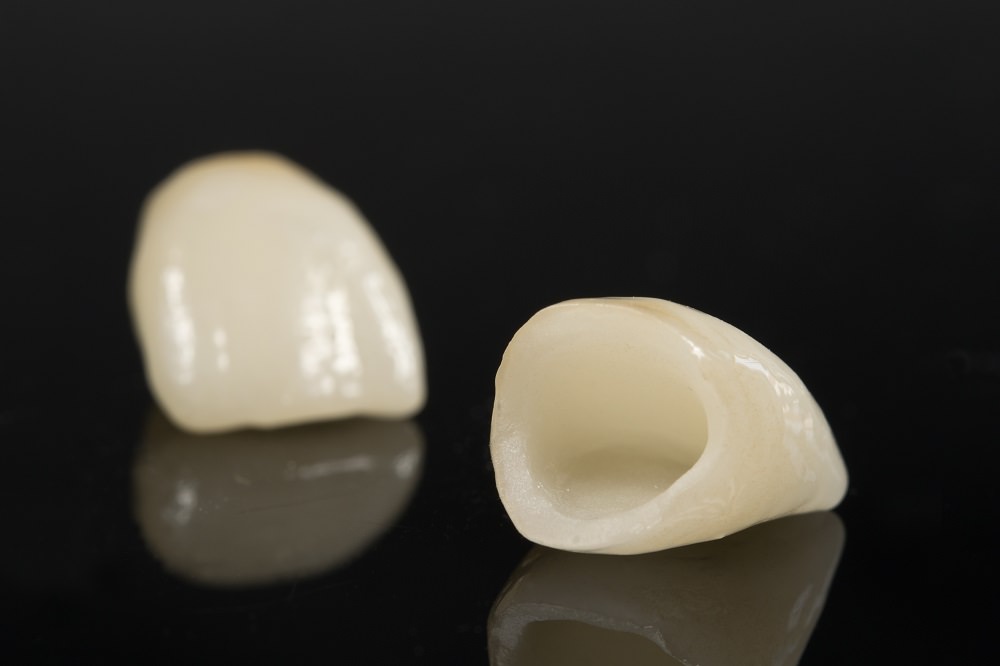
Dental Crowns
A crown can be made from porcelain, metal, zirconia or even gold.
These need to be made professionally at a dental laboratory so do take some time.
While you await your crown, the dentist may give you a temporary plastic crown to wear.
Some dentists can make crowns on the spot but this isn’t typically recommended.
Most people by now have heard of veneers.
A veneer is really just a thin layer of good quality materials placed over the top of your tooth to enhance the appearance and sometimes function.
Veneers are made from similar material as fillings and also porcelain. They are mostly used for their aesthetics.
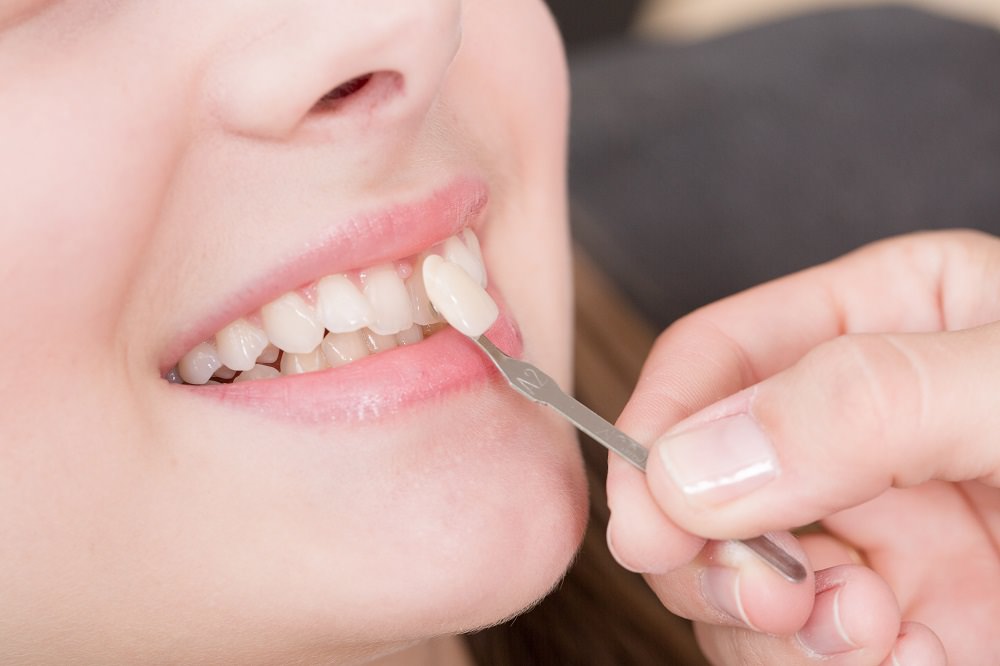
Dental Veneer colour matching
There are also the lesser-known dental caps – replacing the pointy part or cusp of your teeth and made from similar materials as a filling.
Inlays, Onlays and emergency repairs made on the spot from filling materials are also options for dental restoration.
Understanding exactly what type of restoration you require will assist you in finding the best quote and choosing the right dentist for you.
A consultation with a dentist will provide you with a treatment plan outlining exactly which service you will need.
Are There Different Types Of Fillings You Can Get?
Most people would be surprised to learn that there isn’t just one type of filling – there are actually several!
Your standard filling, inlay, onlay, dental cap and emergency repairs.
These are different due to the different levels of damage and placement of the restoration.
A general filling is basically used as a ‘puzzle piece’ to replace parts of the tooth that are missing.
The filling is placed to recreate a normal tooth shape so that you are still able to retain function and health of the tooth for as long as possible.
This can be done by the dentist in one appointment.
A dental inlay is constructed outside the mouth and then glued in once complete.
These restorations are known to be longer-lasting but also more expensive than a general filling.
They are known to protect the tooth and prevent further damage such as cracks. They’re often made from gold alloy or ceramic.
An onlay is similar to an inlay except that it will also include a cusp capping or corners (incisal).
An onlay is similar to a veneer but more functional and it is more commonly used for back or molar teeth.
They are made from gold allow or ceramic and a longer lasting and protective of the tooth.
A dental cap is useful when the pointy part (cusp) of a tooth is worn down. These are made from filling materials or as part of an inlay or onlay.
Emergency dental work can also involve a dentist using filling materials to repair a tooth quickly.
Oftentimes these will be temporary to stop a rough tooth from cutting the mouth or tongue until a longer-term solution can be implemented.
What Are The Classes Of Restoration And Their Costs?
Dental restorations are classified from the numbers one to six, dependent on their location on the tooth.
The different classifications are also used to determine the type of treatment and the cost.
- Class I include cavities found in pits or fissures on molars and premolars or maxillary incisors. Usually on the occlusal, facial or lingual surfaces. Mostly posterior teeth.
- Class II refers to cavities impacting the occlusal, buccal and lingual surfaces of premolars and molars or the palatal of maxillary incisors. Mostly anterior teeth.
- Class III includes cavities found in incisors and canines on the proximal surfaces not involving an angle. Mostly anterior teeth.
- Class IV refers to pits or fissures involving the incisal edge of teeth.
- Class V includes cavities affecting anterior teeth’s incisal edges.
- Class VI refers to pits or fissures impacting the cusp tips of molars, premolars and cuspids.
Your dentist will show you on your X-ray or on a diagram which tooth is impacted so there’s no need to fully understand the classes and which tooth falls under which class.
A List Of Common Dental Restoration Materials?
There are several common materials that are used for dental restoration.
The Australian Dental Association listed these in 2015, with a total of 10 different examples of dental materials.
- Amalgam – direct metallic restoration
- Gold – indirect metallic restoration
- Non-precious metal – indirect metallic restoration
- Silver reinforced glass ionomer cement – adhesive restoration
- Compomer – adhesive restoration
- Composite resin – adhesive restoration
- Glass ionomer – adhesive restoration
- Polymer glass – adhesive restoration
- Porcelain – indirect ceramic
- Acrylic – resin.
Understanding what materials are used for your restoration will assist in you understanding how long the material will last and whether the cost will be higher or lower.
Can Any Dentist Perform A Wide Range of Dental Restorations?
Dental restorations should be able to be carried out by most dentists.
However, some of the types of restoration pieces may not be created on-site.
For example, crowns and veneers are often made in a dental laboratory.
In these instances, your dentist will perform the necessary treatment such as filing the tooth back in size to fit the crown or veneer snugly.
Your dentist then takes an impression of the tooth or teeth to send to the dental lab for creation of your crown or veneer.
Your dentist will then cement this to your tooth once created.
Some dentists can ‘mill’ restorative materials on site but these are usually only made out of ceramic or porcelain, not the metal alloys.
If you need these restorations done, you should check if your dentist can complete this on the spot or if they send away a mould to a dental lab.
Will Insurance Cover Any Of These Costs?
If you have private health cover, many restorative treatments will be covered.
Understanding the difference between general and major dental is important in this instance, as there are certain inclusions depending on your level of cover.
General fillings are classed as general dental, which most levels of health cover will take care of.
There are always yearly caps and waiting periods that apply for general dental.
Major dental will include crowns, bridges and veneers under your cover.
Yearly caps and waiting periods also apply to major dental and not every level of cover will include these restorations.
As always, it’s important to understand your yearly caps, waiting periods and what you are and aren’t covered for in your health fund.
Conclusion
There are many types of dental restoration, ranging from small fillings to replace most of your tooth.
It’s important to understand which teeth require restoration, the type of restoration and the cost before booking your appointment.
Understanding your private health cover and what you can access is also important.
Keep an eye on your waiting periods and your yearly caps before booking your treatments.
Disclaimer
Information found within this post has been sourced and referenced by professionals and is intended for informational and educational purposes only. We do not know your individual circumstance and therefore do not accept any responsibility for any errors or omissions that may occur. It is advisable and recommended to seek direct advice and consultation with either your dentist or your general practitioner.
By Anthony Cade
Created at October 07, 2020, Updated at January 25, 2025


